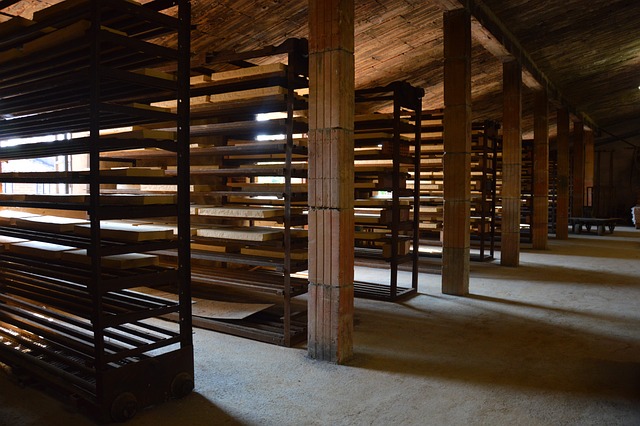How Can You Prevent Electrical Issues in Your Dryer?
First up, keep an eye on the dryer’s power cord. If it’s frayed or damaged, it’s time for a replacement. A damaged cord can be a fire hazard, so treat it like you would a ticking time bomb—address it immediately.
Next, don’t overload the dryer. It might be tempting to stuff it full to save time, but that can strain the electrical components. Imagine trying to squeeze into an already packed elevator; it’s just not going to end well. Your dryer needs room to breathe, too!

Regularly clean the lint filter. A clogged filter doesn’t just affect drying efficiency; it can cause the dryer to overheat, leading to potential electrical issues. It’s like trying to run a race with a backpack full of bricks—no wonder it’s struggling!
Also, make sure the dryer is properly grounded. If the grounding isn’t right, you’re risking electrical shocks or even worse, fire hazards. It’s like walking a tightrope without a safety net—one slip, and it could be disastrous.
Finally, inspect the dryer’s venting system. A blocked vent can lead to overheating, and overheating can cause electrical components to fail. Think of the vent as your dryer’s exhaust system; it needs to be clear so that everything can operate safely and efficiently.
By following these simple steps, you’ll help ensure your dryer runs smoothly and safely, avoiding those annoying and potentially dangerous electrical issues.
Top 5 Essential Tips to Prevent Electrical Failures in Your Dryer
First up, regularly check and clean the lint filter. Think of the lint filter as your dryer’s first line of defense against overheating. If it’s clogged, your dryer has to work harder, which could lead to electrical issues. So, after every load, give it a quick clean. It’s like giving your dryer a breath of fresh air!
Next, don’t forget to inspect the dryer vent hose. If you haven’t cleaned this out in a while, it’s time to get your hands dirty. A blocked vent can trap heat and moisture, potentially causing an electrical short. Imagine trying to run a marathon with a tight belt around your waist—that’s what it feels like for your dryer when the vent’s clogged.
Third, check the power cord and plug for any signs of wear and tear. Frayed cords or burnt plugs are a red flag that something’s wrong. If you notice any damage, replace the cord immediately. It’s like spotting a crack in the dam—if you don’t fix it, the problem will only get worse.
Also, make sure your dryer is plugged into a properly grounded outlet. An ungrounded outlet can lead to electrical shocks or even fires. Think of it as a safety net for your appliance—without it, your dryer is walking a tightrope.
Finally, consider scheduling an annual professional inspection. Just like you’d get a check-up for your car, your dryer deserves a little TLC from a pro to catch potential issues before they become big problems.
By following these simple yet crucial steps, you’ll keep your dryer in top shape and avoid the hassle of unexpected electrical failures.
Avoid Costly Repairs: How to Keep Your Dryer’s Electrical System in Check
So, how do you keep this powerhouse in check? Start with the basics: always unplug your dryer before inspecting anything. It’s like making sure your car is off before you pop the hood. Next, check the power cord for any signs of wear and tear. If it looks frayed or damaged, it’s time for a replacement. A damaged cord is a potential fire hazard, and replacing it could be a simple fix compared to what you’d face with a major electrical issue.
The next step is to inspect the electrical outlet. Over time, outlets can become loose or damaged, and a faulty outlet can lead to overheating. If you notice any signs of scorch marks or if the plug doesn’t fit snugly, it’s wise to call a professional to get it repaired. A secure and functioning outlet is crucial for safe dryer operation.
Finally, don’t forget about the dryer’s internal components. Check the circuit breaker panel and make sure the dryer’s circuit isn’t overloaded. A tripped breaker can be a sign of an underlying issue, so if you experience frequent trips, consider having an electrician evaluate the system. Just like a balanced diet is vital for an athlete, a well-balanced electrical load keeps your dryer running smoothly.
By regularly checking these elements, you can ensure your dryer stays in great shape and avoid those dreaded costly repairs.
Dryer Electrical Safety 101: Simple Steps to Prevent Malfunctions
Start with a routine check of your dryer’s electrical connections. Are the cords in good shape, or do they show signs of wear? Just like you wouldn’t drive a car with frayed tires, you shouldn’t use a dryer with damaged cords. And remember, never overload your dryer. It’s like asking a small engine to pull a heavy load—it simply won’t handle it well and might cause overheating.
Another crucial tip is to keep the area around your dryer clear of clutter. Picture this: a small, hidden object causing a spark in an overstuffed area. Not a great scenario, right? Keeping the space around your dryer clean allows for proper ventilation and reduces fire risk.
Also, always make sure your dryer is properly grounded. If you’re unsure, have a professional check it out. It’s similar to having a qualified mechanic inspect your car to ensure everything’s in order.
Regularly clean your lint trap and venting system. Think of lint as the dust that collects in your car’s air filter—it needs to be cleaned to keep things running smoothly. Neglecting this can lead to blockages that might cause overheating or even a fire.
Is Your Dryer at Risk? Key Preventative Measures for Electrical Issues
First off, ensure that your dryer is plugged into a properly grounded outlet. A faulty outlet can be a sneaky culprit behind electrical malfunctions. Inspect the cord regularly for any signs of wear or fraying—if you see any damage, it’s time to replace it. Similarly, keep an eye on the plug for any signs of overheating or discoloration, which can indicate serious underlying issues.
Another key measure is to clean the lint filter before every load. A clogged filter doesn’t just slow down your drying time; it can cause overheating, which might lead to electrical problems. Think of it like cleaning your car’s air filter to keep the engine running smoothly.
Finally, be aware of the warning signs. If your dryer starts making strange noises or has inconsistent performance, don’t ignore it. These can be early indicators of electrical troubles. It’s always better to address these issues sooner rather than later, much like getting a strange noise in your car checked out immediately.

By staying on top of these preventative measures, you can help ensure that your dryer continues to run efficiently and safely, preventing any unnecessary hiccups in your laundry routine.
The Ultimate Guide to Safeguarding Your Dryer from Electrical Hazards
First off, let’s talk about the importance of regular maintenance. Imagine your dryer as a high-performance car—it needs regular check-ups to run smoothly. Cleaning out the lint trap every time you use it is a must. Lint buildup isn’t just a nuisance; it’s a fire hazard waiting to happen. Think of it as the dust on your car’s engine—if left unchecked, it can cause serious problems.
Next, inspect the dryer’s power cord and plug. Look for any signs of wear and tear, like fraying or exposed wires. It’s kind of like checking your phone charger for damage; you wouldn’t use a frayed charger, so why risk using a damaged dryer cord? If you notice any issues, replace the cord immediately—it’s a small investment for peace of mind.
Also, make sure your dryer is properly grounded. This is like having a safety net while walking a tightrope; it ensures that any electrical faults are directed safely away from you. If you’re unsure about grounding, consult a professional—better safe than sorry!
Finally, be mindful of the electrical outlet you use. Avoid overloading it with other appliances, as this can create an overload situation similar to a circuit breaker tripping due to too many gadgets plugged in at once. Proper outlet use and avoiding daisy-chaining can prevent unnecessary electrical issues.
By following these steps, you’ll keep your dryer running efficiently and, more importantly, keep your home safe from electrical hazards.
Prevent Dryer Fires: Electrical Maintenance Tips You Can’t Ignore
First off, check those vents. Imagine your dryer as a high-speed train, and the vents are its tracks. If the tracks are clogged, the train can’t move smoothly and might derail. Similarly, a clogged vent traps heat and lint, which can ignite and cause a fire. Regularly clean out the lint trap and inspect the vent hose to keep everything running safely.
Next, let’s talk about the electrical connections. Think of them as the dryer’s lifeline. Over time, these connections can become loose or corroded. This not only affects performance but can also spark a fire. Ensure all connections are secure and free of any wear and tear. If you notice any frayed wires or loose plugs, it’s time for a replacement.
Lastly, don’t overlook the importance of a professional check-up. Picture your dryer as a car. Even if you’re good with DIY maintenance, a pro can spot issues you might miss. An electrician can delve into the more intricate parts of your dryer’s electrical system, ensuring everything’s in tip-top shape.
Incorporate these practices into your routine, and you’ll keep your dryer running safely and efficiently. After all, a little maintenance goes a long way in preventing potential hazards and keeping your home safe.

